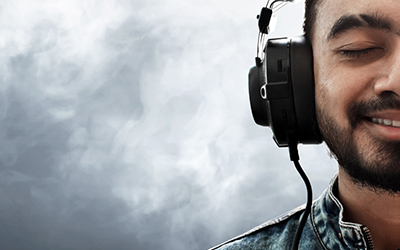“There’s no way I’m switching now”. This was the fifth time I had heard my brother make the same excuse about changing his music platform. Regardless of the multiple new features I kept showing him on Spotify, trying to market the platform that I was so proud and passionate about using, he refused to budge. Between the hassle of having to re-create his entire library, and the reservations he had of leaving behind the feeling of familiarity, he had developed his loyalties to Apple Music.
In fact, the more I said it, the more it reinforced his inclination to the platform. However, what we will later see is that he was subconsciously acting on his ‘status quo’ bias.
In simple terms, these biases come from the study of ‘behavioural-economics’, that puts aside the idea that all customers are ‘rational’ in their choices and starts examining where and when people might use their emotional prejudices in their decision making. Heuristics are a vital, yet lesser-known aspect of consumer behaviour. These ‘mental shortcuts’ that allow people to make their brand and purchasing decisions are probably more commonly used than you’d think.
When I started to think that there must be a real deal-maker on Apple, I asked him what he loved so much about it. Perhaps it could convince me to change my platform too. However, much to my surprise, he seemed to be more against the idea of change than against Spotify itself. The key question here is then if this can be considered loyalty to the brand, or a loyalty to a sense of comfort and familiarity? Therefore the term – “status-quo bias” which explains why people sometimes will not change the situation even if at least one other better alternative presents itself.
Other than the fact that there have been various paradigms that try to define consumer loyalty, the debate over whether our preference for certain brands comes from an emotional or a rational point of view has highlighted the importance of loyalty programmes in business.
But is loyalty influenced by a bias, or is it a bias in itself?

Think of a brand that you have been with for over three years. Whether it’s your go-to coffee shop, favourite clothing brand or a restaurant that never fails to satisfy your cravings. Why are you still with them? Is it based solely on their quality of service and value for money, or are you also settling for what might be ‘good enough’ instead of the ‘best of the best’, based on convenience or even familiarity?
Using Dettol handwash has never been questioned in my house. Not only has it become a rule of thumb, but the fact that it is a brand that has come with me from childhood, has meant that I never had any reason to question it. Rather than evaluating the product based on its value, I developed a sense of attachment to it. My loyalty was formed out of familiarity and maybe even nostalgia. Look around, this will also be true for at least one product in your house – just because of the longevity of its presence in your life, you may still gravitate toward that brand regardless of what its competitors might be offering. Here is our bias in its simplest, most common form.
What is also becoming more common in modern day is the presence of a ‘say-do’ gap: this is when customers are claiming one thing, but behaving differently, and is a prime example of emotional decision-making. For example, someone might claim that Cipriani is their favourite restaurant, but McDonalds is more of a regular appearance on their credit card bill. The logic behind this is fairly straight-forward: we might say what we believe we want our friends to think of us or perhaps even aspire to, but the truth is that sometimes the need to be financially frugal takes over.
The opposite is true when it comes to loyalty programmes with members telling you how much they save when they book flights with their favourite airline while in reality, they love the Limousine service, or the Business Class lounge access, they get as part of the deal.
To build an authentic strong and long-lasting relationship with customers, ensure that you are more than just affordable.
Showing our ‘loyalty’ to a high-end airline gives us what we can essentially call ‘bragging rights’, (yes we’ve all seen the business class lounge check-in on Facebook or the obligatory ‘Seat’ photograph) when it clearly isn’t the cost convenient option that a rational point of view would opt for.
So how do we know if we are subconsciously acting on our more emotional instincts when making a decision? The answer is, you’re doing it all the time. Ever stuck with a brand because of the great first deal you got from them? That’s ‘anchoring’. Have you perhaps changed your mind about a brand based on a recently disappointing experience even though they have been consistently satisfying in the past? That’s ‘recency bias’. Just like this, several subtle yet dominant biases sit at the back of our subconscious minds, helping us decide which brands do and don’t deserve our undivided loyalty.
